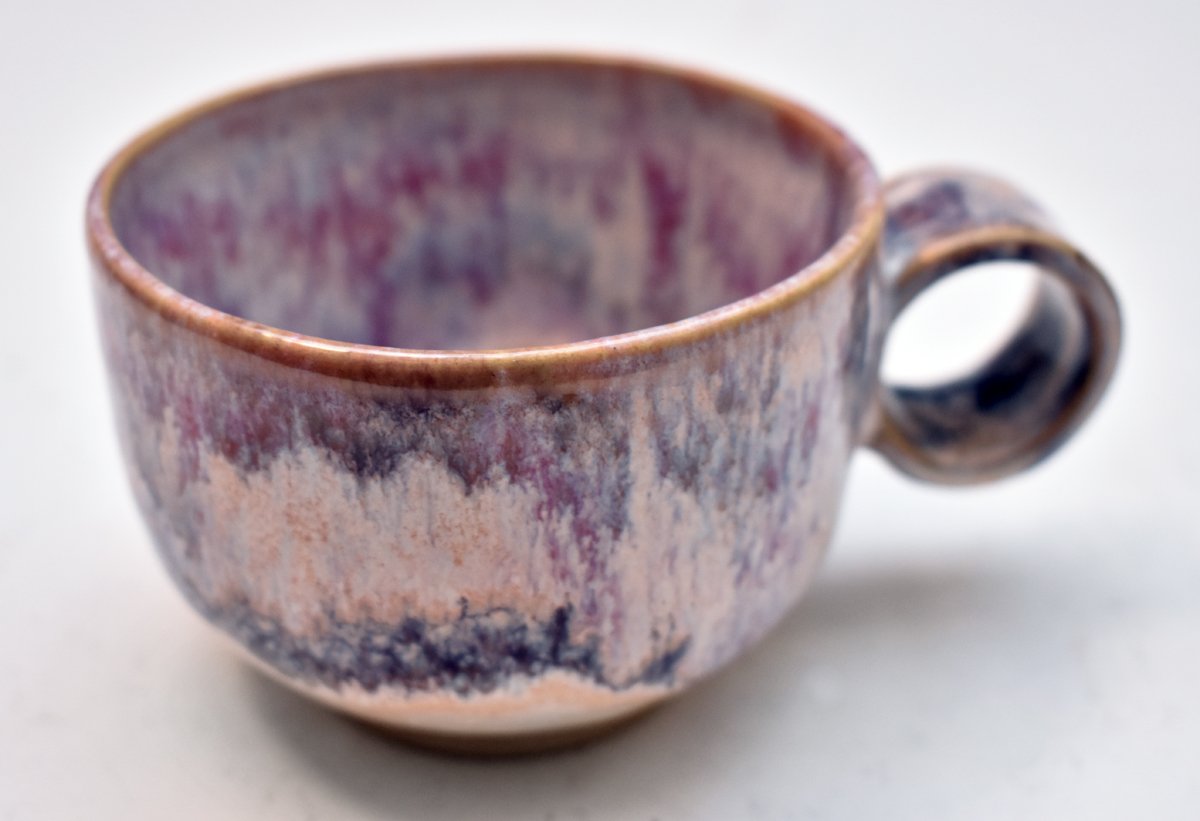Lois Song
Lois Song (b. 1983, Chicago) has always had art in her life, but it first came out of a basic necessity- communication.
Song, whose parents moved from Korea to the United States in the early 1980’s, spoke only their native tongue during their first years in the States. Song was seeped in the language of her ancestry, and it wasn’t until she went to school that she quickly had to learn English. Journaling was one of the constant tasks of the class, and lacking written language, she drew what she knew and experienced. Making sketches also helped her communicate with her parents, who sometimes didn’t understand things or objects Song only knew in English.
Art classes always made Song feel confident and comfortable. A good creative space was a safe haven for her. Painting and pinch pots kept her engaged, with the tactile nature of the clay being especially appealing. Her high school was one of the few places that had functioning pottery wheels, but by the time Song got the clay centered, it was time to clean up and go to the next class. She never got to fully immerse herself in throwing, but was able to explore the medium extensively with hand-building.
Song enthusiastically went for a degree in art education with a concentration in visual communications at the School of the Art Institute of Chicago. She again got the chance to delve into hand-building, and created a series of geometric vessels that were purposely non-functional. Her studies qualified her for certification in art for kids in Kindergarten all the way through High School. Song jumped right into teaching at Joseph Medill Elementary on the West Side of Chicago. Medill, which was considered a “turn around school”, was under-resourced but was the kind of place she knew she needed to be. She taught there for half a decade, becoming resourceful by applying to grants that gave her students a leg up. Even though she taught her classes from “art-on-a-cart”, her creative thinking lead to a lot of fun and stimulating projects. She compulsively gathered cardboard, newspapers and common objects to make African-inspired masks and other projects that kept her students interested. Song tried to roll larger life lessons and perspectives into the projects, including building a shelter out of newspapers (by rolling them into rods). The class discussed people who were unhoused, and how that affected their lives. Song took her out-of-the box thinking to several more institutions, one in Cabrini-Green in Chicago, the other in Palatine, Illinois.
In 2007, Song became one of the recipients for an unusual grant and residency run by Earth Watch. The artist and educator spent more than two weeks digging into the arctic tundra to collect soil samples to be sent to a lab for analysis. The study of Permafrost was the focus of this expedition, and Song was the only educator among scientists and explorers. She thinks the program was extended to her so she could take her experiences back to the classroom, which she did! Her own observations on the animals she saw (Arctic fox and polar bears to name a few), made their way into her curriculum. The summer was life-altering - along with also getting married and going on honeymoon!
Song continued teaching until she had her second child (2011). The baby, who was born with Cerebral Palsy, was in the NICU for a substantial amount of time. She decided to refocus her attention and energy toward helping her daughter thrive. She spent the next few years getting creative with her children, essentially taking her enthusiasm for the classroom and surrounding them with art play and creativity. Her daughter’s health journey has also benefited from the artist’s mind - her therapy became interspersed with unique ideas that gave her confidence and strength.
Song enjoyed the creativity with her children, and did do some part-time work as well. But even with all the fun art activities, she felt that she lost a part of her identity. “Mommy art” just didn’t replace her own practice, so she found her way to LSPS-LC through her friend Julie Oh in 2021. With her youngest in Kindergarten, she now had some consistent hours to focus on her own creations. A fourth attempt to get into a LSPS-LC class (our spots fill up quickly) lead to Independent Study. Getting her hands back into clay was restorative for her. The change in her was so great that even her children noticed, and would suggest she head to the studio when she was particularly stressed.
The open time and endless art potential of the independent study lead her to building planters with slabs. Julie Oh and others helped her get her techniques back, and she created planters with flowing curves that touched on architecture and nature. Song eagerly repotted many of her plants in them (she has a green thumb like her mother), and enjoys their forms every day. She jumped at a spot in the wheel throwing class when it opened up. Over the course of several sessions, the artist was able to get past just centering her clay, and started to come up with stunning cup designs. She attributes these forms to her background in graphic design, stripping the pieces down to its purest form. Song switched back to Independent Study and has been pursuing the best version of each series she makes. She continously strives to make lighter planters and cups that match in size and style. Song oscillates between slabs and wheel throwing, which keeps her interested and challenged.
Song’s journey with surface color and design has also gone at a quick pace. At first, soft greens and blues played a prevalent role on all her pieces. She began to crave brighter colors, something that would create a visual punch! Her preference for simple forms gave her room to explore color. The color pink is a perennial favorite, but is hard to find in glaze form. Studio mate Elaine Petarakis had experimented with a new glaze called “Honey Flux” and Song was smitten. She soon jumped down the rabbit hole of pairing honey flux with other commercial glazes. More than a few purchases later from Amaco, Song is now immersed in mixing and layering to create surfaces that sing. The time consuming work (she’ll set up all her pieces and spend an entire afternoon painting) has her brushing on at least three layers of glaze. The work is cathartic for her, and the drying time between each layer gives her some time to be present in her thoughts. Song is now creating surfaces that somehow seem tied to her impressions of the arctic. Flowing and organic colors mimic lush and mossy ground, while other swirly and drippy combinations resemble the Aurora Borealis. Song is now looking to try out a dark flux glaze to capture some of the starry nights and galaxies beyond. Her youngest child loves space, lunar eclipses, blue moons and other special occurrences. That inspires her to keep trying for new and more stunning outcomes. Smaller moon jars and celadon glazes inspired by ancient pieces throughout Korean ceramic history are also on her list of potential projects.
Song and her good friend (besties since the 3rd grade) Jinny Choi, have recently teamed up to start an art-based business in the Lincoln Square neighborhood of Chicago. Bunny Ears Art House (4541 N. Lincoln Ave) will be a play-based space for children and their parents. Song remembers the early days of her children’s lives, wishing she had a space to do larger work (with less clean up!). The space will have classes and open time for infants to elementary aged children. Both Song and Choi will be teaching, encouraging sensory friendly experiences that stimulate play and connection. Recycled materials will be a key ingredient to this eco friendly business. She hopes to start an after-school art club in the space, as well as other creative iterations over time. Bunny Ears is slated to open in 2024, and Song hopes to provide a spot where moms and their young kids can fulfill their art potential. Just like she did with her children!





